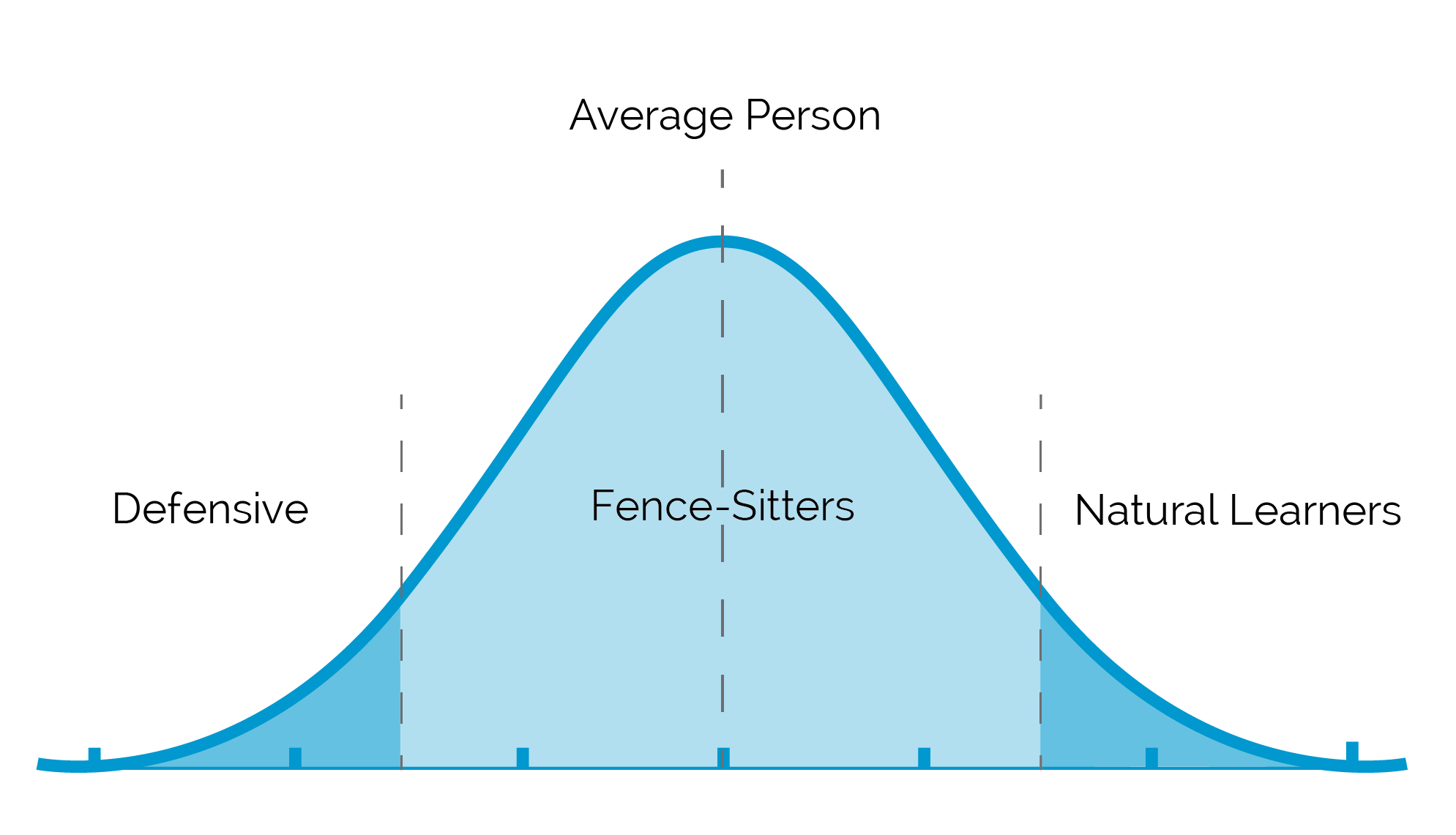
Think about a typical training program you might attend at work... Yes, there are objectives that were set for that training by HR and yes, they were likely reiterated at the beginning of the session. Nonetheless, two of the most common ways training programs measure success are: a) the most obvious, how many bums were in the seat - i.e attendance and (b) the results from the feedback sheet which asked you to rate the value of the program and sometimes how effective the facilitator / presenter was.
With these as normal measures of success, it isn’t surprising that the long-term impact of the program is minimal.
In fact, a bell curve (pictured below) will explain which group will indeed apply what the program was intended to convey. Twenty percent of the group are natural learners because they will seize the opportunity that the training program afforded them. The 60 percent who land in the middle, are fence-sitters, and may or may not take anything back to their lives. The last 20 percent are considered defensive, and will only apply something over their dead bodies. So that means about 80 percent of people in your audience may not make any changes or improvements as a result of your program.

So how can metrics focus positively influence of that 80 percent? How is it different than a training program?
Let’s start with how they’re able to get senior management’s attention. At DH, we make metrics an intrinsic part of the culture shift.
We work with an organization’s leaders to focus on business issues that they really care about - sometimes pain points like employee engagement, customer retention, or opportunities to create lifetime customers or improve the perception of the brand. We tap into their desire to create a better future for their organization, leave it better than when it started and create a long-lasting, positive perception that can last into a profitable future for the business.
Related: How This One, Common Factor Can Make You a WOW Leader
Let’s look at how the metrics of a training program and culture initiative differentiate using the metaphor of a physical fitness class.
If you think of the success of a physical fitness class, you would not measure how someone felt at the end of a session. You would focus on how someone has changed the way that they are living and acting as a result of the sessions they attended - i.e. how their diet has changed, how much regular physical activity they are doing daily (e.g. with a FitBit). It’s those long-term changes that really determine success.
To measure if your culture initiative is worthwhile, you look at ongoing feedback and along designated checkpoints: the 3, 6 , 9, 12, 18 and 24+ month marks to determine if the initiative is really working and to see if adjustments should be made.
Here are some business cases from some of our clients:
In order to bring the new culture to life, on-going reinforcement from senior leaders is critical. They are the ones who can influence the bulk of their employees to embrace the new values - and having metrics that measure bottom-line business results for the culture-building initiative is the best way to keep leaders’ focus and attention.
How can you measure culture and employee happiness? Try our DHi to discover your happiness level:

Ron has been a coach and facilitator for more than 30 years where his focus is on building a values-based culture as the cornerstone to organizational success. Ron’s expertise is in leadership development – in reconnecting people to the leader within. In that capacity, he has consulted with multi-nationals in Canada, the US, Europe, China and India. He has lead change initiatives, conducted numerous sessions in Strategic Planning and Team Building, and designed and delivered programs in Performance Management. He has coached people from all walks of life – from executives of major corporations to youth.